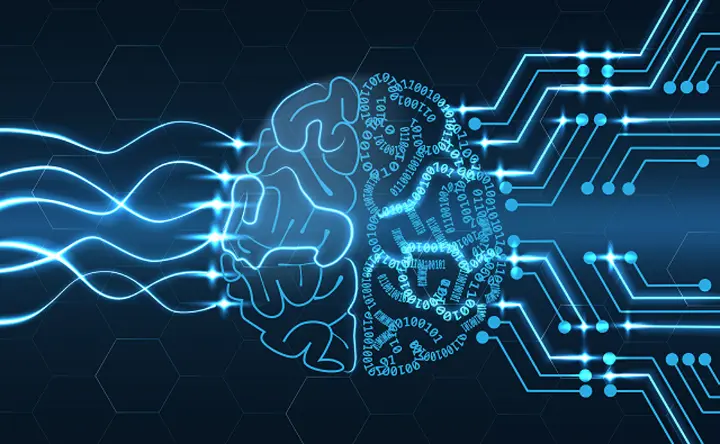Introduction
Large Language Models have become highly essential to AI-driven applications across all industries, including the automation of customer service contacts to aid in medical diagnostics.
LLMs have enormous potential to transform businesses and societal functions since they can, through their ability to generate text that sounds like human speech, enable businesses to scale up communication and decision-making tasks that were formerly reliant on human inputs.
Because AI is always challenging for the latest height, there is a need for reliability to settle matters with the models.
This form of reliability goes way beyond just good readability in the produced text and brings instead a question to the correctness, consistency, and even ethics of information produced.
For instance, fields like health, finance, and legal services, which rely on precision, have unreliable AI outputs.
One wrong answer relating to medical advice, financial planning, or legal documentation can lead to very disastrous consequences, ranging from money loss to jeopardization of human life.
LLMs are incredibly powerful, and yet they are not immune to failure.
Probably the biggest issue for developers and researchers with AI is building reliable LLMs.
What makes LLMs reliable? What's wrong with LLMs today? And what can one do to make LLMs more reliable?
Understanding Reliability in LLM
Reliability of LLMs: Reliability refers to the capacity of a model to produce outputs relevant, fair, and contextually consistent for all possible inputs.
Since AI applications are bound to be applied in crucial decision-making scenarios, it is quite important to reach reliability.
Being connected with such grave implications due to cases of information being inadequate or even misleading, the use of LLMs is implicated in those scenarios.
In this regard, reliability has emerged as a common denominator in the normative and pragmatic implementation of AI.
Key Factors Influencing Reliability
1. Generated Content Accuracy: This is the most straightforward output-based measure of reliability of LLMs in terms of correctness of information.
First of all, they would look at the factual correctness. Furthermore, they will control the logical coherence in the content.
There's no way to trust an LLM when it tends to generate wrong information, especially for such fields as medicine and engineering, where precision is very critical.
2. Consistency Across Different Contexts and Queries: A successful LLM should provide the same output when the same or equivalent input is posed in different contexts.
Related variation in response with a change in context sometimes confuses the machine's output and makes one lose trust in the output.
3. Removing Biases and Errors: LLMs are often trained on huge chunks of data scraped from the internet, holding biases (social, racial, and gender-related).
Removal of these biases is necessary so that outputs emerging from LLMs appear fair and unbiased.
4. Dealing with Ambiguity of Open-Ended Questions: At other times, LLMs are confronted with ambiguity in open-ended questions.
An ideal model should be able to identify the presence of ambiguity and not proffer incorrect responses, or coherent answers that look convincingly confident but are probably certainly wrong or misleading.

Common Credibility Issues of LLMs
While LLMs have reached unprecedented success, the number of credibility issues significant challenges that need to be solved is vast.
1. Hallucination of Facts and Information That Does Not Existing methods.
Perhaps the most worrying challenge that LLMs have is the one of hallucination. In such a case, models produce what would initially appear to be factual but actually turns out to be completely fictional.
For instance, a model may generate references, names, or statistics that do not exist and could therefore be harmful to users.
2. Sensitivity of Prompt Variations
LLMs often respond in a very sensitive manner to slight variations in prompts, leading to outputs that are often drastically different.
A question presented in one specific manner may have a sharp, correct answer when the same question is offered in a rather redundant form, ending up giving a nonsensical or incorrect response.
The occurrence of such unaccountability undermines the reliability of the model.
3. Trouble with Reasoning and Complex Logics
Even with easy reasoning tasks, in general, LLMs are likely to perform well on average but are unable to show interesting and even complex logical reasoning for the most part.
Multi-step inferences, cause-and-effect analysis, and long-term coherence continue to be challenging when trying to generate output-dependent outcomes upon sound reasoning with LLMs.
4. Lack of Domain-Specific Expertise and Factual Knowledge
Even though LLMs are trained on massive amounts of data, they lack deep domain expertise.
They might be able to give shallow answers to broad domains but atrociously fail to produce exact, correct outputs in cases where the domain concerns something like medicine or the law.
In domains such as these, failure to a specific domain is disastrous.
5. Ethical and Bias-Related Issues
Another serious concern about the reliability of LLMs is bias.
Because these models are based on data from humans, they may learn how to express and amplify biases about gender, race, and social issues.
Thus, answers not only may be wrong but also ethically, wrong answers, and hence, their usage is significantly restricted in sensitive applications.

Strategies to Improve the Reliability of LLMs
Considering all of the aforementioned problems, various techniques to ensure the reliability model performance of LLMs have been proposed.
1. Data Curation and Preprocessing
The quality of an LLM is, as a matter of fact, dependent on the training data it receives. The more diverse and high-quality the training data is for that model, the less would be the probabilities of producing erroneous outputs in that model.
• High-Quality and Diverse Training Data: Ensures the inclusion of data from various sources and representation from a good variety of demographics and viewpoints that would reduce biases and increase reliability.
• Elimination and filtration of biased or noisy external data sources: Some techniques in data preprocessing include bias filtering. These techniques eliminate or can somewhat limit the negative impact from problematic sources of data, such that some biases in the outputs of the model are at a lesser level.
2. Domain-adaptive fine-tuning models
Most general-purpose LLMs collapse for domain-specific applications. They can be dramatically improved in reliability for applications to such domains by fine-tuning using data particular to the industries in question.
• Domain Specific Datasets to Increase Factual Competence and Expertise: Developing domain-specific datasets of the best-curated knowledge for health, law, or other similar domains increases the models' ability to produce factually accurate, expert-level responses.
• Transfer Learning Approaches: Transfer learning enables the capacity of models to utilize the knowledge acquired from generic tasks into special fields. Transfer learning increases reliability without forcing the necessity of extensive retraining from scratch.
3. Prompt Engineering and Guidance
The actual output of an LLM could heavily depend on the structure of a prompt. In this regard, engineers and researchers have devised strategies so that the prompts will guide the models toward correct answers and that are more reliable.
- Guide towards more reliable outputs: The use of clear, precise language in prompts guides models to stay on topic and reduces ambiguity.
- Structured Prompts and Context-Reinforcement Strategies: Adding context or requiring the model to use the language understanding given data sources or prior discourse generally makes the model more believable and consistent.
4. Output Post-Processing
Output enhancement of LLMs by other models or rule-based systems which check and verify information for accuracy.
- Use of Rule-Based Systems or Auxiliary Models for Output Validation and Fact-Checking: These systems automatically tag suspicious outputs or cross-check facts against trusted external databases, thus lowering the false error rates and hallucinations.
- Use of External Databases or Knowledge Bases for Fact Verification: By integrating LLMs with external knowledge bases, factual information in ai models can be verified, which further adds reliability to the model's output.
5. Human-in-the-Loop Systems
Machine intelligence coupled with human oversight is perhaps the surest means of attaining reliability in LLMs.
- Using Expert Feedback to "Correct and Refine Model Behavior: Domain experts could be solicited for some model outputs as feedback. The idea here is to allow the LLM to learn from its mistakes over time, and thus increase correctness.
- Human Oversight for High-Stakes Inputs: Human oversight is important to sensitive sectors like the medical and legal service industries, not only to assure reliability but also to ensure ethically correct AI-driven outputs.
6. Multi-Model and Hybrid Approaches
Hybrid approaches by integrating LLMs with other systems that include symbolic reasoning or statistical methods can potentially improve their reliability because hybrid approaches tend to provide a compensation for areas where LLMs may lack by themselves.
Technological and Research Innovations towards Increasing Reliability
Existing technological advancements and research have created roadmaps to reduce the reliability problems in LLMs.
1. Architectural Development towards Transparency and Reliability
Recent architectures design LLMs to be as transparent and as interpretive as possible. In this way, traces chain of thought and the reasoning from a particular output can be established; hence it increases trust and reliability with users.
2. Research on Techniques of Bias Mitigation
The main thrust of many works focuses on the debiasing of LLMs. Techniques related to adversarial training and fairness-focused regularization can reduce harm done by the harmful biases and increase ethical reliability.
3. Reinforcement Learning from Human Feedback in Aid of Improved Alignment
Reinforcement Learning from Human Feedback enables gentle human-gentled model fine-tuning with the help of human preferences. The resultant outputs of the model will, therefore, reflect value sets and human expectations.
4. Model Adaptive and Learning in Real Time from Feedback
The future of AI reliability-that is, truly reliable LLMs-will come with adaptive models learning from real-time feedback from both users and automated systems. In this way, such models can continuously improve their performance in real-world scenarios.

Challenges in Achieving Full Reliability
There is much still to be done for the right now, as noted above since definite steps ahead toward achieving full reliability from LLMs are yet to be marked.
- Technical Trade-offs in Balancing High Complexity with High Accuracy: High complexity often brings better performance but is much harder to interpret. It requires more considerable computational resources to train and deploy.
- It is not scalable across industries because what works well in one domain tends not to transition directly to others.
- It achieves reliability at a very high cost to the computational power and resources and it is costly, which the smaller companies and organizations cannot afford.
- Ethical Risks of Over-Reliance on LLMs: The more reliable the LLMs, the greater the risks of over-reliance on them-the more the jobs in which human judgment and ethical competence come into play.

Case Studies: Improving the Reliability of LLMs in Action
There are many real-life examples of how both strengths and weaknesses of improvements in reliability based on LLMs may come to the surface.
1. Medicine
In medicine, from medical diagnosis and patient communication, AI began using the LLM. Here, high stakes mean small errors can cause big problems; thus, rigorous fine-tuning, human oversight, and integration of the medical database for fact-checking improve the accuracy and reliability of LLM.
2. Legal
LLMs are applied to contract review and in generating documents in legal terms. Since the crucial elements of legal documents are absolute accuracy and adherence to legal standards, applications of LLMs are often aligned with both domain specific context-specific datasets and human expert curation for output resulting from such applications to be credible.
3. Customer Service
Most companies have incorporated LLM-based chatbots into the customer service portfolio. They do an excellent job in handling routine user queries but become difficult in establishing reliability for complex, sensitive topics. Companies are bypassing this by adding more post-processing layers and human-in-the-loop systems.
Future Trends
There are a few other key features and trends that will probably determine the future search for more reliable LLMs.
- New Trends in LLM Research to Enhance Dependability: Some new trends in LLM research with the capability to enhance dependability will continue on the edge. This will be constantly pushed by the investigation of the ways through which bias can be reduced; facts checked, and better contextual understanding.
- Interdisciplinary Research: AI, Ethics, and Domain Expertise: Dependability in reliable artificial intelligence systems will be an interdisciplinary effort, having AI researchers, ethicists, and industry professionals work toward technical and ethical standards for solutions.
- Future Consequences of Revolution on AI Sectors: With all these promises, health, finance, and legal services industries will look to integrate LLMs of their own specialties as inputs to revamp the way they conduct and manage themselves.
In summary, what we think
LLMs are increasingly integrated in applications driven by AI in virtually every industry.
Reliability issues with LLMs are crucial because some of the challenges, such as accuracy, the avoidance of bias, and the means of answering complex questions that would achieve dependable outputs from LLMs, make those aspects difficult to solve.
Some of the techniques to improve reliability include data curation, fine-tuning, prompt engineering, and human oversight; however, problems to be addressed include complexity, cost, and concern for ethics.
While this trend of AI continues to unravel, the researchers' cooperation with industry experts as well as ethicists will be the key in building reliable trustworthy LLMs.
Future LLMs would shine brighter with continued innovation and efforts in more interdisciplinary directions bringing improvements of reliability, ultimately ushering transformative benefits across all industries while ensuring a good end for AI.
Frequently asked questions (FAQs)
1. Why is reliability so crucial to LLMs in high-stakes domains like health care or finance?
Reliability is absolutely critical in areas like healthcare, finance, or law as every action or decision needs to be precise, give accurate answers, and reliable. Erroneous LLMs: "A misprescribed prescription by an expert, prediction of monetary values or legal agreement may unleash devastating effects in respect to either misdiagnosis or loss of money or nightmares from the legal. Such machines must be guaranteed to output correct, accurate responses consistent, and ethical answers in critical applications.".
2. What are the primary reliability problems in LLMs?
Some of the common reliability problems that arise with LLMs include:
Hallucination of facts: LLMs have sometimes produced information that is actually wrong or even fabricated and so misleading to a user
Sensitivity to variation of the prompt: even slight differences in wording a question or request can produce wildly different or inconsistent answers.
- Lack of multi-step logical reasoning: LLMs do not always have multi-step logical reasoning; therefore, chances are that the conclusions may be inconsistent or wrong at times.
- Incorrect about domain knowledge: LLMs are very good generalists but lack really domain-based know-how-for example, in medicine or law-and therefore may not do very well in such domains.
- Bias and ethical flaws: LLMs may inherit biases in terms of racial or gender and even amplify them and thus lead to discriminative or unfair outputs.
3. How can LLM biases be mitigated to improve their reliability?
There are several different strategies to mitigate linguistic LM biases:
- Data Curation: Diversification in training data ensures that its contents are a variety of thoughts and thereby reduces the risk of learning and reproducing model biases.
- Preprocessing Techniques : The cleaning process on eliminating biased or problematic content in the training dataset also minimizes the bias.
- Fine-tuning on Ethical Standards: Fine-tuning the LLMs on predefined datasets that are especially curated to remove sensitive biases will contribute to fair and balanced outputs.
- Post-processing methods: Checks and rules can be applied after the creation of text to correct biased content or ensure a balance.
4. How crucial is human monitoring for the reliability-enhancing mechanisms of the LLMs?
High-stakes applications of LLMs heavily rely on human oversight for their reliability-enhancing mechanisms. In general, human experts can assist in output validation and fact-checking that aid in the correctness of the outputs and spotted mistakes in and false information, feasible feedback to enlighten the improvement of the the model's responses through learning, and ethical judgments in areas that the AI system is most likely to err, especially if the scenario is very sensitive or ambiguous.
The use of human-in-the-loop systems will allow organizations to take full advantage of the rapidity and effectiveness of LLMs while simultaneously harnessing human intelligence in the process. This will, therefore, guarantee that final outputs become both accurate and contextually relevant.
5. What technological advances are on the horizon to make LLM more reliable?
Several research and technological advancements are in the making with the aim of making LLM more reliable:
New Model Architectures End Increased interpretability along with more transparent explanation of how the generated output was obtained; that is, improved trust and reliability.
Bias Mitigation Techniques Techniques including adversarial training and fairness-driven regularization are used to reduce the effects of biases in the models.
- Reinforcement Learning from Human Feedback (RLHF): a form of training that will allow models to learn from human preferences and thereby allow refinement of behavior towards closer alignment with human values and expectations.
- Adaptive Models: The future LLM models will be able to include an adaptive learning mechanism so they can change and adapt in real time as they are updating with new data or using feedback to prove more reliable in the long run.
All these technologies are aimed at the achievement of the ends of countering the present limitations and allowing LLMs to attain maximum reliability and efficiency in deployment on the grounds of real-world tasks.